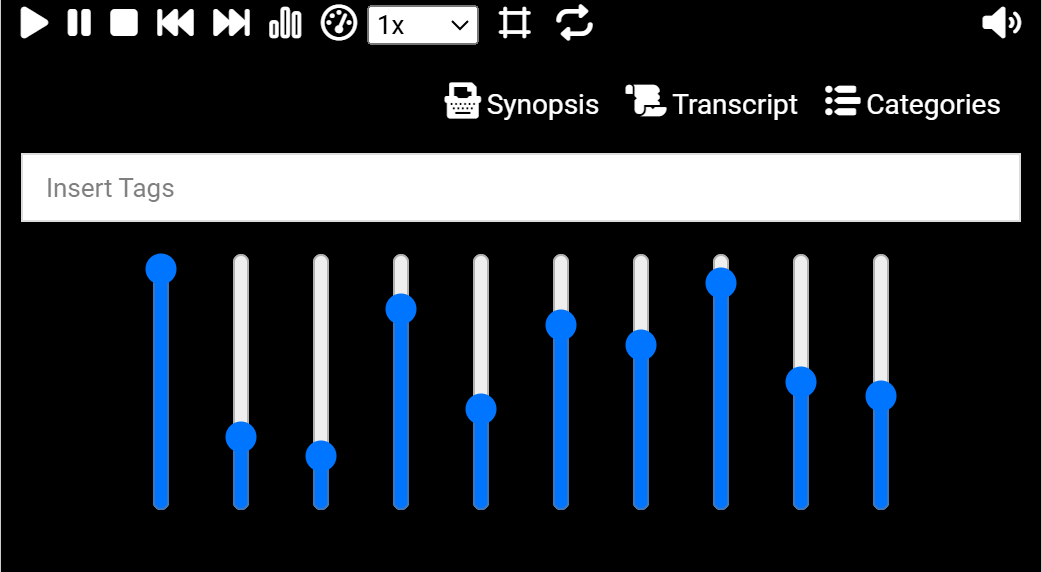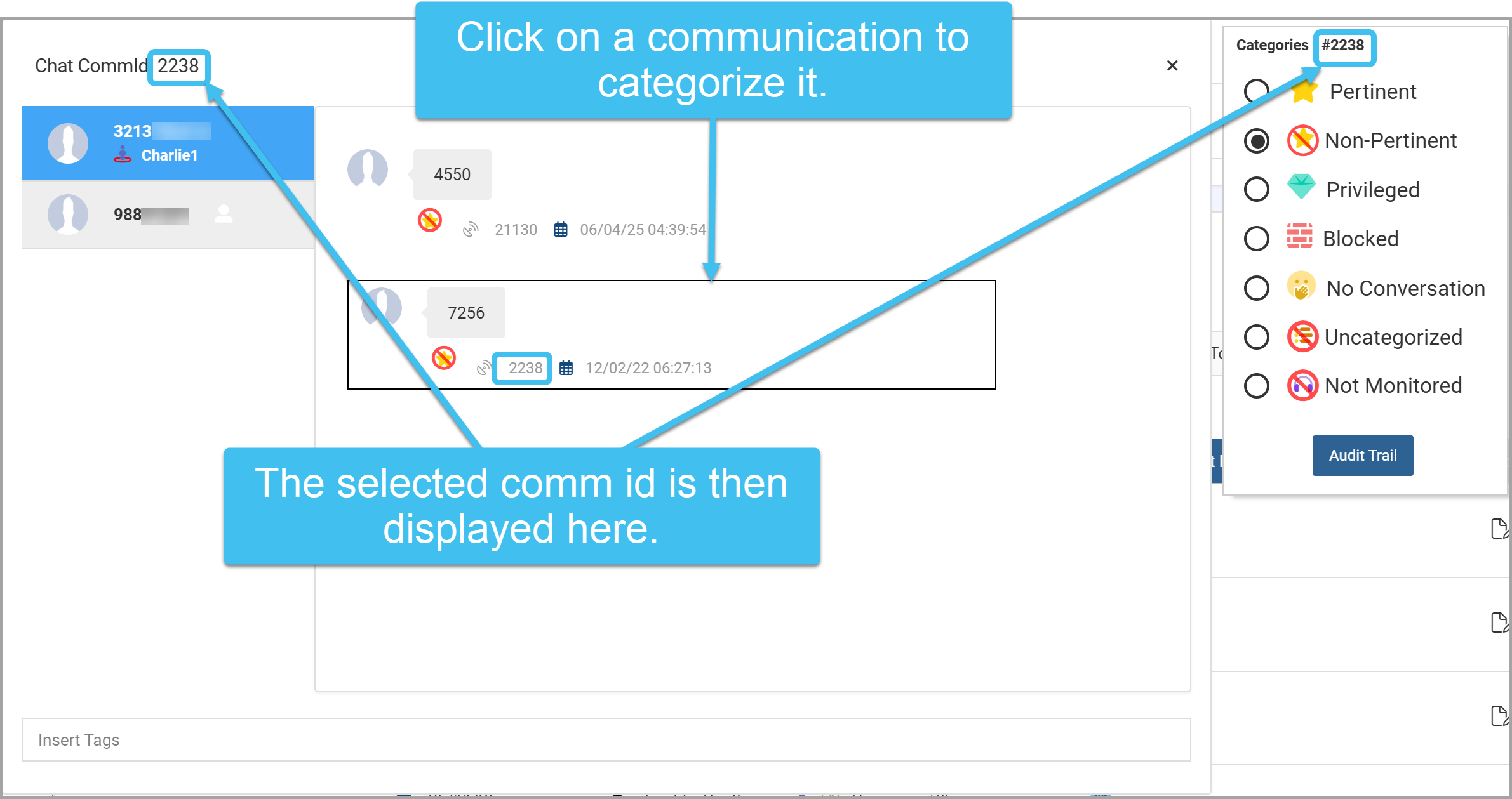Audio Playback window
This topic provides an overview of the Audio Playback window and all the settings and buttons on it. However if you require step-by-step procedures on using live monitoring refer to Using Live monitoring for wiretaps.
This feature requires option E19 Sentinel content log. If you do not have this option this feature is not available.
The Audio Playback window can be opened once the call is complete, allowing you to add the transcript, and define the call category such as whether or not it contained pertinent case information.
The window displays the numbers involved in the call, along with the names if known, an arrow representing who originated the call, the Case ID (LIID), the communication identifier, the latitude and longitude of the call's tower if available, the type of call, the codec used by the operator to send the call if available, and if the call has been redirected it displays the final number it was redirected to. The redirect number is prefixed with ![]() , or if it is a voice-mail number then
, or if it is a voice-mail number then ![]() .
.
The data you enter is saved automatically every few seconds so there is no requirement for you to save.

Click to play the voice recording.
You can also use the keypad shortcut of ctrl + alt + numpad5 to play and pause the recording.

Click to either jump back or forward five seconds in the voice recording.
You can also use the keypad shortcut of ctrl + alt + numpad4 and ctrl + alt + numpad6 to jump back or forward 5 seconds respectively.

Use to adjust the playback speed which can be slowed down to 25% of the original speed or increased to double the original speed.

Use to select a section of the call that you want to repeat then click  to repeat it. When the selected area shows:
to repeat it. When the selected area shows:
-
in red, it is repeated.
-
in green, it is not repeated.

Use to continually repeat a section of the call that you selected using  . When the selected area shows:
. When the selected area shows:
-
in red, it is repeated.
-
in green, it is not repeated.
Enter a summary of the call including any information that you believe to be relevant, for example times and locations of interest.
Type a copy of words that were spoken.
Click to open and close the Categories window.
The Categories window allows you to categorize the communication. You can only select one category and any change you make is automatically saved along with an audit trail. This category is then displayed in your Work list and you can filter communications by it if required.
NOTE: When you change the categorization of a communication it changes which users have access to the communication. If you set a communication to either Privileged or Blocked only a user with monitoring permissions of Administrator can then access the communication and change the communication's category.
- Pertinent: use to mark the communication as containing relevant information to your case. Communications categorized as this can also be accessed by users with no monitor permissions but who do have permission to the case.
- Non Pertinent: use to mark the communication as not containing relevant information to your case. Communications categorized as this can also be accessed by users with no monitor permissions but who do have permission to the case.
- Privileged: use to mark the communication as being a privileged call that should not be listened to, for example a call between a target and their lawyer. Communications categorized as this can only be accessed by a user with monitor permissions of Administrator. If the associate number has a privileged exception restriction applied then it is automatically characterized as this.
- Blocked: use to mark a communication which needs to be completely blocked from a monitor accessing. You may be advised to do this for example by a district attorney. Communications categorized as this can only be accessed by a user with monitor permissions of Administrator. If the associate number has a blocked exception restriction applied then it is automatically characterized as this.
- No conversation: use to mark if there is no voice on the call. Communications categorized as this can also be accessed by users with no monitor permissions but who do have permission to the case.
- Uncategorized: all voice calls, with no exception restrictions, are categorized as this by default. All non-voice communications are categorized as this when first opened by a monitor and remain at this until the monitor selects the appropriate category. Communications categorized as this can only be accessed by users with monitor permissions.
- Not Monitored: all non-voice communications, with no exception restrictions, are categorized as this by default. Once opened by a monitor this automatically changes to Uncategorized until the monitor selects the appropriate category. Communications categorized as this can only be accessed by users with monitor permissions.
Note, you can select other comm ids in the Chat timeline view and categorize them too.






